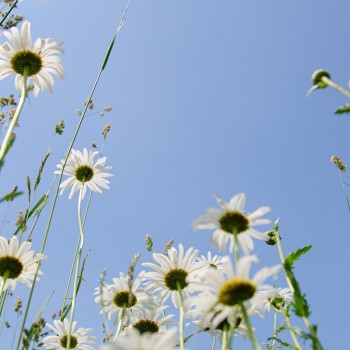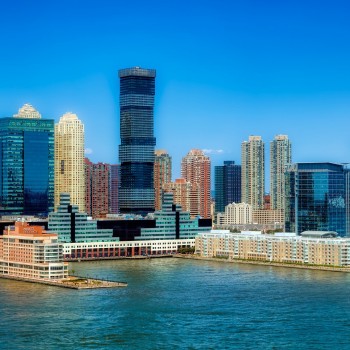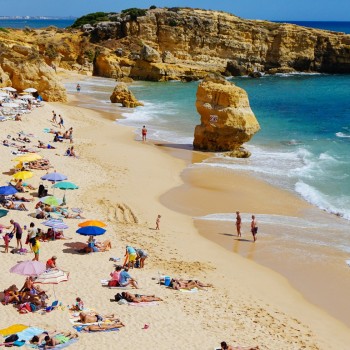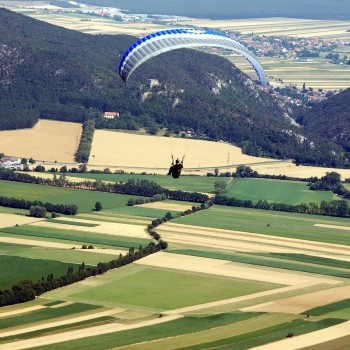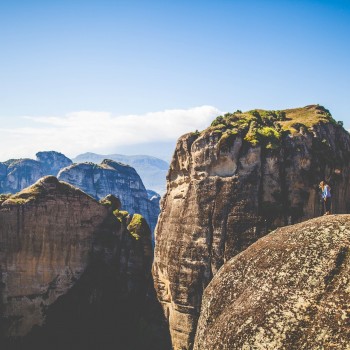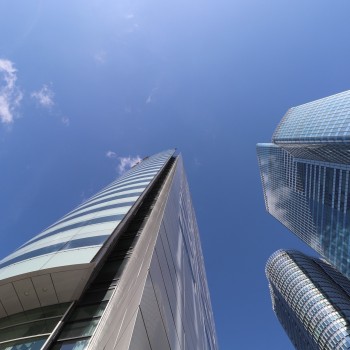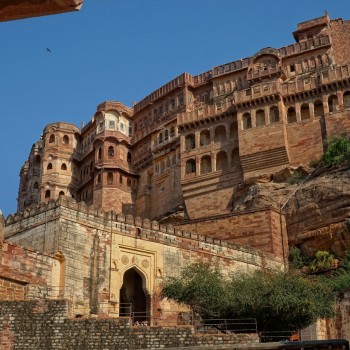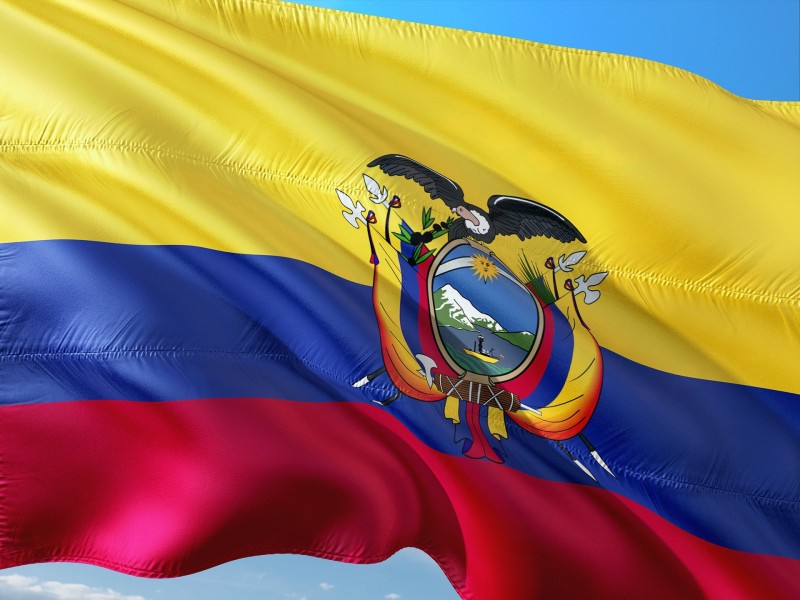Ecuador
Ecuador
Capital city description
The capital city of Ecuador is Quito. It was formerly called the San Francisco de Quito. Quito is the second-most populous city in Ecuador after Guayaquil. It has a population of 2.6 million people, according to the last census held in Ecuador, in 2014.
The city is located in the Guayllabamba River Basin, on the slopes of the Pichincha, on the Northern Highlands of Ecuador. Quito was declared the capital city of Ecuador on March 5, 1541.
Climate
June to September ( dry season)
December to May ( rainy season)
Ecuador Climate on the Coast The coast is usually hot and sticky. It also has the most distinct rainy season pattern, especially on the northern coast.
Running from December to May, the rainy season is marked by hot temps and frequent downpours.
Languages spoken
Official language: Spanish
The principal language of Ecuador is Spanish, which is spoken by approximately 93% of the population. Spanish colonizers first introduced this language during the 16th century and became the language of government, business, and religion. Today, Spanish spoken in Ecuador has three (3) distinct regional variations: Amazonic, Andean, and Equatorial Coastal.
The most widely spoken variants are Andean Spanish, spoken in the highlands, and Equatorial Coastal Spanish, spoken from the northern border with Colombia and Peru's southern border. These regions are the most heavily populated in the country.
Fun/Fascinating Facts
1. The national tree of Ecuador is the cinchona tree which produces Quinine, the first drug used to prevent and treat malaria.
2. Ecuador is one of only two South American countries that do not share a border with Brazil.
3. On 12 April 2019, Ecuador granted political asylum to Wikileaks founder Julian Assange. Under investigation by the US government and facing extradition to Sweden, Assange sought refuge at the Embassy of Ecuador in London.
4. In April 2019, Lenin Moreno said the country had “reached its limit on the behavior of Mr. Assange” and invited British police into the embassy in London, where the Wikileaks co-founder was finally arrested.
5. In 2008, Ecuador was the first country to recognize the rights of nature officially. Rather than treating nature as property, Ecuador acknowledges that nature has constitutional rights and has the “right to exist, persist, maintain and regenerate its vital cycles.”
Unique Customs/Traditions
- In Ecuador, when a girl reaches age 15, a Catholic ceremony officially presents her to society. A party with food, drinks, and dancing follows the tradition if the family can afford it. Women usually marry by age 23 and as young as 14 in some rural areas, while men marry around 25. Families often emphasize that young people should complete their education before marrying. Many urban couples do not live together before their church wedding, even if they have already been married by law. Common-law relationships, referred to as estilo manabita, are usual in rural, coastal areas, mainly because people cannot afford a formal wedding. Even though no ceremony has been performed, they are accepted as legal marriages.
- Elderly family members are respected, and several generations may live under the same roof. Many families lead a simple life in tiny homes or rented apartments. While traditional roles are followed in most families, urban families change as more women work outside the home and more men share household duties. Other traditions are changing as well. For example, children lived with their parents until they got married, but they often left to get an education, work, or be independent. A young woman would traditionally go directly from her parents’ home to her husband’s, but more women are experiencing independence before marriage. Families are also getting smaller, particularly in urban areas.
- Serranos—people from the mountainous areas—generally favor maize and potatoes, while many Costeños—people from the coastal regions—favor rice, beans, and bananas. Fresh fruit is abundant, and fish is a staple item. Soup is almost always served at both the midday and evening meals. Hot bread is a popular afternoon snack. Some favorite dishes include arroz con pollo (rice with chicken), locro (a soup made with potatoes, cheese, meat, and avocados), llapingachos (cheese and potato cakes), ceviche (raw seafood marinated in lime and served with onions, tomatoes, and various spices), fritada (fried pork), and empanadas (pastries filled with meat or cheese).
- Food and eating habits are an essential part of Ecuadorian culture. Every holiday is associated with a special kind of food, and every town has a specialty dish. The main meal is usually in the middle of the day. Mealtimes are considered a good time for conversation—catching up, conducting business, or socializing. The host expects to pay for the meal when inviting a guest to a restaurant. Young people, however, will often split a bill.
- A handshake is usual when greeting someone. Close friends sometimes “kiss the air” with their lips lightly brushing or touching each other’s cheeks. Men often embrace if well acquainted. It is customary to address people by a title, such as Señor or Señora, when introduced. First names are not generally used between those who are not well acquainted. The title Don or Doña, followed by the first name, indicates respect and friendship among friends. Standard greetings include ¡Buenos días! (“Good day”) or ¿Cómo está? (“How are you?”). Friends commonly greet each other with ¡Hola! (“Hello”).
- When Ecuadorians visit, it is usually for a meal and conversation. However, unannounced visits are typical and welcomed. Guests are typically offered something to drink, and it is polite to accept. Depending on the event, guests are not expected to arrive on time and maybe from ten minutes to an hour late. Guests invited for dinner do not leave right after the meal but stay for the conversation. When guests leave home, they are often given a small gift of something the family has on hand, like fruit or candy. Evening social gatherings—for birthdays, reunions, or parties—might extend past midnight, especially on the coast. These usually involve eating, dancing, and drinking.
- Fútbol (soccer) is the favorite sport in Ecuador, followed by Ecuavolley and track. Ecuavolley is similar to volleyball; it is played with a heavy ball by three players on each net. Other sports include tennis, basketball, and boxing. Few women play sports. Various museums, cultural sites, and the outdoors offer other forms of recreation to many people. Quito, in particular, provides an active cultural life.
- Ecuadorians celebrate the new year by burning effigies of the old year in the streets on New Year’s Eve (31 December). Carnaval takes place in February or March. Easter, Labor Day (1 May), and The Battle of Pichincha (24 May), which marks Ecuador’s liberation, are national holidays. But the most important national holiday is Independence Day (10 August), commemorating the day in 1809 when efforts were first made to become independent from Spain. When a new president is elected, he takes the oath of office on 10 August.
- The independence of Guayaquil is celebrated on 9 October. All Souls’ Day (2 November) is observed by visiting cemeteries; many people place bread-dough “dolls” on gravestones to honor the dead. The independence of Quito (6 December) is celebrated with large festivals, bullfights, and sporting events. Christmas (25 December) is an important holiday. Local festivals and fairs are held various times throughout the year, and each city and province celebrates the anniversary of its founding.
Popular universities
| Name | Description | |
|---|---|---|
| Escuela Superior Politécnica del Litoral (ESPOL Polytechnic University) | Established in 1958, Escuela Superior Politécnica del Litoral (ESPOL Polytechnic University) is a non-profit public higher education institution located in the urban setting of the metropolis of Guayaquil (population range of 1,000,000-5,000,000 inhabitants), Guayas. This institution also has branch campuses in the following locations: Las Peñas, Santa Elena, Daule. Officially recognized by the Consejo de Aseguramiento de la Calidad de la Educación Superior del Ecuador (Council for Quality Assurance of Higher Education of Ecuador), Escuela Superior Politécnica del Litoral (ESPOL) is a large coeducational Ecuadorian higher education institution. Escuela Superior Politécnica del Litoral (ESPOL) offers courses and programs leading to officially recognized higher education degrees such as bachelor's degrees, master's degrees in several areas of study. | |
| Universidad Politécnica Salesiana (Salesian Polytechnic University) | Founded in 1994, Universidad Politécnica Salesiana (Salesian Polytechnic University) is a private higher education institution located in the medium city of Cuenca (population range of 250,000-499,999 inhabitants), Azuay. This institution also has branch campuses in the following locations: Guayaquil, Quito. Officially recognized by the Consejo de Aseguramiento de la Calidad de la Educación Superior del Ecuador (Council for Quality Assurance of Higher Education of Ecuador), Universidad Politécnica Salesiana (UPS) is a coeducational Ecuadorian higher education institution formally affiliated with the Christian-Catholic religion. Universidad Politécnica Salesiana (UPS) offers courses and programs leading to officially recognized higher education degrees such as bachelor's degrees in several areas of study. | |
| Universidad San Francisco de Quito (San Francisco de Quito University) | Established in 1988, Universidad San Francisco de Quito (San Francisco de Quito University) is a non-profit private higher education institution located in the urban setting of the metropolis of Quito (population range of 1,000,000-5,000,000 inhabitants), Pichincha. This institution also has a branch campus in Cumbaya. Officially recognized by the Consejo de Aseguramiento de la Calidad de la Educación Superior del Ecuador (Council for Quality Assurance of Higher Education of Ecuador). Universidad San Francisco de Quito (USFQ) is a medium-sized coeducational Ecuadorian higher education institution. Universidad San Francisco de Quito (USFQ) offers courses and programs leading to officially recognized higher education degrees such as bachelor's degrees, master's degrees, doctorate degrees in several areas of study. | |
| Universidad Técnica Particular de Loja (Technical University of Loja) | Established in 1971, Universidad Técnica Particular de Loja (Technical University of Loja) is a private higher education institution located in the urban setting of the small city of Loja (population range of 50,000-249,999 inhabitants). Officially recognized by the Consejo de Aseguramiento de la Calidad de la Educación Superior del Ecuador (Council for Quality Assurance of Higher Education of Ecuador). Universidad Técnica Particular de Loja (UTPL) is a small (uniRank enrollment range: 3,000-3,999 students) coeducational Ecuadorian higher education institution formally affiliated with the Christian-Catholic religion. Universidad Técnica Particular de Loja (UTPL) offers courses and programs leading to officially recognized higher education degrees such as bachelor's degrees, master's degrees in several areas of study. | |
| Pontificia Universidad Católica del Ecuador (Pontifical Catholic University of Ecuador) | Founded in 1946, Pontificia Universidad Católica del Ecuador (Pontifical Catholic University of Ecuador) is a non-profit private higher education institution located in the urban setting of the metropolis of Quito (population range of 1,000,000-5,000,000 inhabitants), Pichincha. Officially recognized by the Consejo de Aseguramiento de la Calidad de la Educación Superior del Ecuador (Council for Quality Assurance of Higher Education of Ecuador). Pontificia Universidad Católica del Ecuador (PUCE) is a medium-sized (uniRank enrollment range: 7,000-7,999 students) coeducational Ecuadorian higher education institution formally affiliated with the Christian-Catholic religion. Pontificia Universidad Católica del Ecuador (PUCE) offers courses and programs leading to officially recognized higher education degrees such as bachelor's degrees, master's degrees in several areas of study. | |
| Universidad de Las Américas (University of the Americas) | Founded in 1995, Universidad de Las Américas (University of the Americas) is a non-profit private higher education institution located in the urban setting of the metropolis of Quito (population range of 1,000,000-5,000,000 inhabitants), Pichincha. Officially recognized by the Consejo de Aseguramiento de la Calidad de la Educación Superior del Ecuador (Council for Quality Assurance of Higher Education of Ecuador), Universidad de Las Américas (UDLA) is a small (uniRank enrollment range: 3,000-3,999 students) coeducational Ecuadorian higher education institution. Universidad de Las Américas (UDLA) offers courses and programs leading to officially recognized higher education degrees such as bachelor's degrees, master's degrees in several areas of study. | |
| Universidad de Guayaquil (University of Guayaquil) | Founded in 1867, Universidad de Guayaquil (University of Guayaquil) is a non-profit public higher education institution located in the metropolis of Guayaquil (population range of 1,000,000-5,000,000 inhabitants), Guayas. Officially recognized by the Consejo de Aseguramiento de la Calidad de la Educación Superior del Ecuador (Council for Quality Assurance of Higher Education of Ecuador), Universidad de Guayaquil (UG) is a very large coeducational Ecuadorian higher education institution. Universidad de Guayaquil (UG) offers courses and programs leading to officially recognized higher education degrees such as bachelor's degrees in several areas of study. | |
| Escuela Politécnica Nacional (National Polytechnic School, Ecuador) | Escuela Politécnica Nacional (National Polytechnic School, Ecuador), founded in 1869, is a non-profit public higher education institution located in the urban setting of the metropolis of Quito (population range of 1,000,000-5,000,000 inhabitants), Pichincha. Officially recognized by the Consejo de Aseguramiento de la Calidad de la Educación Superior del Ecuador (Council for Quality Assurance of Higher Education of Ecuador), Escuela Politécnica Nacional (EPN) is a large coeducational Ecuadorian higher education institution. Escuela Politécnica Nacional (EPN) offers courses and programs leading to officially recognized higher education degrees such as bachelor's degrees, master's degrees, doctorate degrees in several areas of study. | |
| Universidad de Cuenca (University of Cuenca), founded in 1867, is a non-profit public higher education institution located in the urban setting of the medium city of Cuenca (population range of 250,000-499,999 inhabitants), Azuay. Officially recognized by the Consejo de Aseguramiento de la Calidad de la Educación Superior del Ecuador (Council for Quality Assurance of Higher Education of Ecuador), Universidad de Cuenca (UCUENCA) is a large coeducational Ecuadorian higher education institution. Universidad de Cuenca (UCUENCA) offers courses and programs leading to officially recognized higher education degrees such as bachelor degrees, master degrees in several areas of study | ||
| Universidad Técnica de Ambato (Technical University of Ambato) | Universidad Técnica de Ambato (Technical University of Ambato) was founded in 1969; it is a non-profit public higher education institution located in the small city of Ambato (population range of 50,000-249,999 inhabitants), Tungurahua. Officially recognized by the Consejo de Aseguramiento de la Calidad de la Educación Superior del Ecuador (Council for Quality Assurance of Higher Education of Ecuador), Universidad Técnica de Ambato (UTA) is a coeducational Ecuadorian higher education institution. Universidad Técnica de Ambato (UTA) offers courses and programs leading to officially recognized higher education degrees such as bachelor's degrees in several areas of study. | |
Festivals & Events
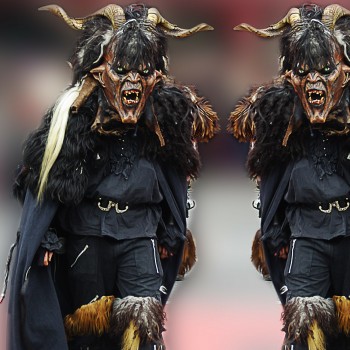
La Diablada de Píllaro (The Devils of Pillaro)
Date: January 1-6
This bizarre celebration is held in Píllaro (north of Tungurahua Province, near Baños City) between the 1st and the 6th of January each year. Thousands of imps take the streets to dance in the Diablada. The party gathers the whole town and foreigners alike. The three main characters are the devil, guaricha, and capariche. The beauty of the ceremony lies o its origin, which comes from the colonial era and evokes the indigenous and mestizo rebellion against the Catholic religion. The devil costume is a disguised rejection of the preaching of the priests and the physical, economic, psychological, and moral abuse that came for the Spanish.

Carnival (Ecuadorian Mardi Gras) in February or March
Date: February
The date when Carnival takes place varies from year to year. The reason why is that it is a profoundly catholic tradition. Carnival should occur on Monday and Tuesday, 40 days before Easter each year, prior to the Catholic fasting period (around mid-February).
In Ecuador, the festival incorporates an older indigenous tradition of celebrating the second moon by throwing flowers, water, and flour. It is a period of celebration and abundance before the fasting. Though it takes place throughout the country, Guaranda and Ambato are the primary carriers of the tradition.
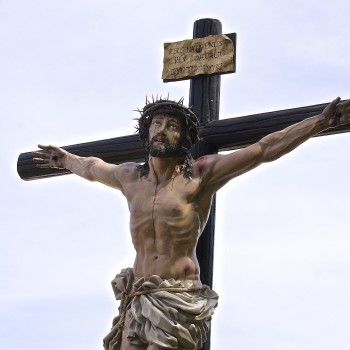
.Semana Santa (Holly Week) in Quito City
Date: April
Holly Week in Ecuador gathers iconic characters in a procession recreating Christ’s journey to the cross, an intensely theatrical tradition. Semana Santa starts on the second Sunday of April. If you happen to be in Quito during this period, make sure you catch one of the multiple processions and immerse yourself in tradition.
However, the not-to-miss event is the Jesus del Gran Poder procession in the lovely historical center of Quitor. Make sure you arrive on time, as it gets pretty crowded.
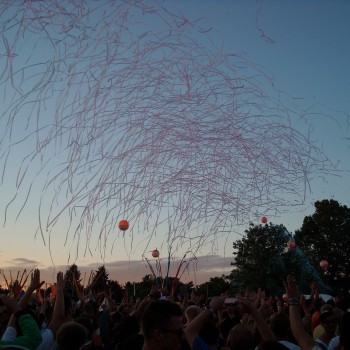
Inti Raymi (Sun Festival) in June and July
Date: June and July
The Inti Raymi celebrations occur during June and July; however, the primary party is held on June 2st. A deeply Andean tradition, the Sun Festival begins with the sunset of the longest night of the year. As soon as the Andean summer begins, Inti Raymi is a celebration and gratitude to the sun.
The festival also matches with the harvest season and the end of an Andean agricultural cycle. The party involves traditional dances (San Juan) and drinks (Chicha de Jora). A colorful and joyful event, symbolizing new beginnings.
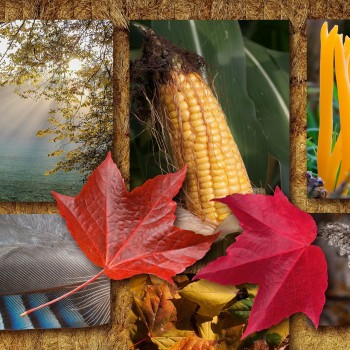
. The Yamor Festival (Corn Festival)
Date: September
The Yamor festivities started 52 years ago. It is a celebration of the intercultural peoples of Otavalo. It blends the celebration of Koya Raymi (the ritual of the moon and the sun as elements of fertility) with Catholic traditions. The word “Yamor” refers to a traditional beverage brewed using seven corn varieties and is unique to this area. This beverage runs freely during the festivities. The indigenous groups of Kichwa Cayambi and Kichwa Otavalo honor the Andean agricultural cycle, with special attention to corn, which is considered a symbol of fertility.
The festivities include processions, music, dancing in the streets, fireworks, cockfighting, mock bullfighting, and lots of fun. You can take a two-day trip to Otavalo during the Inti Raymi season to look deeper at the festival.
The Yammer festivities started 52 years ago. It is a celebration of the intercultural peoples of Otavalo. It blends the celebration of Koya Raymi (the ritual of the moon and the sun as elements of fertility) with Catholic traditions. The word “Yammer” refers to a traditional beverage brewed using seven corn varieties and is unique to this area. This beverage runs freely during the festivities. The indigenous groups of Kichwa Cayambi and Kichwa Otavalo honor the Andean agricultural cycle, mainly corn, which is considered a symbol of fertility. The festivities include processions, music, dancing in the streets, fireworks, cockfighting, mock bullfighting, and lots of fun. You can take a two-day trip to Otavalo during the Inti Raymi season to take a deeper look at the festival.
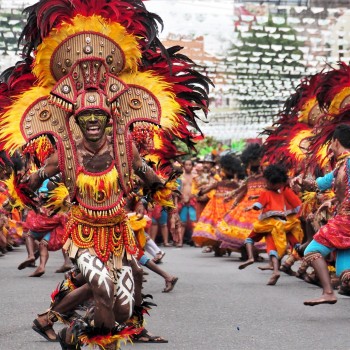
Mama Negra Festivities in September and November
Date: September and November
The Festival of La Mama Negra takes place in the town of Latacunga in Ecuador at the end of September and again during November. La Mama Negra is one of the oldest in the city, and it is a display of the varied cultural influences from its Spanish, Aymaran, Incan, Mayan, and African ancestors. The city streets fill to watch a parade of legendary characters pass by, bestowing blessings, candy, and homemade brew. The festival was established when the Cotopaxi volcano erupted in 1742.
The locals of the region asked the Virgin of Mercy, the patron of Cotopaxi, to spare Latacunga. When the town escaped the volcano's wrath, an annual celebration was set in place in her honor.

The burning of el Año Viejo
Date: December 31st
This is one of the most amusing celebrations in Ecuador, and it takes place at the end of the year. It entails various traditions, but the most notorious one is the burning of Año Viejo (old year) dolls. This effigy is made from newspaper, sawdust, and cardboard representing political figures, personalities, or loved ones.
The burning symbolizes the start of new experiences and better things to come. Las Viudas (The Widows) are significant thing dung these celebrations. Men dressed as women personify the viudas, mourning for the Año Viejo Puppet.
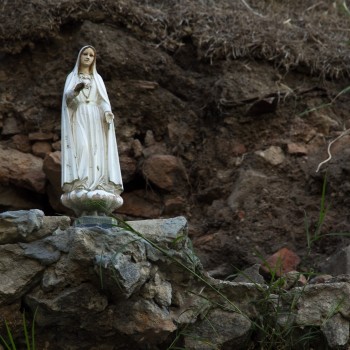
Festival of the Virgin of El Cisne
Date: August 15
Attractions / Top Sights
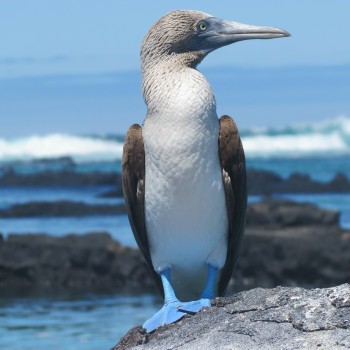
Galapagos Islands
The Galapagos Islands are a small archipelago of volcanic islands belonging to Ecuador in the eastern Pacific Ocean. The islands are pretty remote and isolated, lying some 1000 km (620 miles) from Ecuador.
The Galápagos is world-renowned for its unique ecosystem, which inspired Charles Darwin’s Theory of Natural Selection. Giant tortoises, sea lions, penguins, marine iguanas, and different bird species can all be seen and approached. Strict controls on tourist access are maintained to protect the natural habitats, and a national park-certified naturalist tour guide must accompany all visitors.
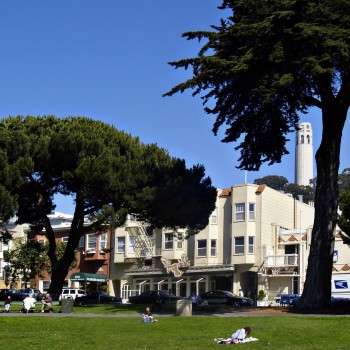
San Francisco Church
Located in Quito’s Old Town district, the Iglesia y Monasterio de San Francisco features several masterpieces, including a sculpture of a winged Holy Virgin by Legarda. Construction for the church began in 1550 on land where the palace of the Incan ruler Atahualpa once stood.
The church complex is massive, covering nearly two blocks, and includes an adjoining museum. San Francisco Church and the surrounding Old Town area are considered one of the most important cultural centers in Latin America. They are one of the main tourist attractions in Ecuador.

Otavalo Market
Part of the fun of traveling in Ecuador is exploring the handiwork crafted by local artisans. There’s no better place to see and purchase local arts, crafts, and clothing than at the markets in the small town of Otavalo. The city is known the world over for the handiwork of its indigenous people, the Otavalo.
Every Saturday, in the city’s Plaza de Ponchos, a broad array of jewelry, wood and stone carvings, and woven clothing are offered for sale.

Catedral Nueva
The colonial city of Cuenca is the third-largest in Ecuador, famous for its year-round temperate climate. The New Cathedral of Cuenca, or “Catedral Nueva,” is the city’s most recognizable landmark. Construction of the church began in the late 1800s and continued for nearly a century.
With a façade crafted from alabaster and marble, the Catedral Nueva is most notable for its three immense domes, each covered in blue glazed tile imported from Czechoslovakia.

Montanita
Ecuador’s southern coastal region boasts scenic shorelines and world-famous beach resorts, including the popular Montañita.
Montañita Town was a sleep fishing village until the international surfing community discovered the area’s exceptional surfing conditions. Montañita is known for its nightlife and nightclubs, bars, and cafés to entertain locals and visitors alike.
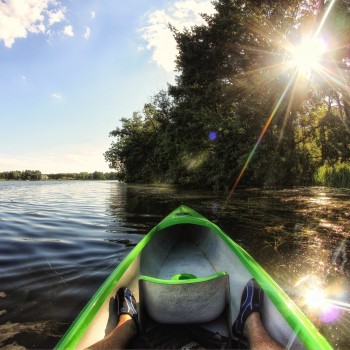
Tena
Situated in the Amazon rainforest region of Ecuador, for tourists, Tena serves as a launching point for jungle adventures. Missionaries founded the town, and a cinnamon industry helped the city survive. The Tena River joins with the Masahualli River and then with the Napo River, a tributary of the Amazon.
Adventure enthusiasts cite Tena as one of the best places in the world for whitewater rafting and kayaking.

Cuyabeno Wildlife Reserve
When to visit: December to March
The Cuyabeno Wildlife Reserve, established in 1979, will appeal to travelers who want to combine the scenic beauty of tropical scenery with wildlife viewing. Located in the Andean foothills of Orellana Province, it is the second largest of Ecuador’s national parks and reserves. Its eight ecosystems, including watersheds, rainforests, and poorly drained areas, can be reached from Lago Agrio.
The reserve is home to more than 500 species of birds and 15 species of monkeys, tapirs, caimans, butterflies, and anacondas, plus lots of other animals and insects.
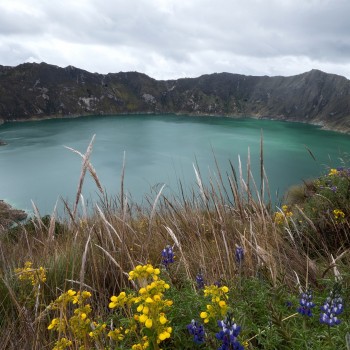
Quilotoa Loop
When to visit: Between the end of June and the beginning of September
Quilotoa Loop is one of the most beautiful lakes in Ecuador and makes for a wonderful visit. It offers stunning scenery and cultural experiences with local people, markets, and villages. Many people regard this trek along with the Galapagos and Amazon as one of the country’s must-visit attractions.
The circuit is about 200km, and if you want to finish at the lake itself, a great way to go is from north to south, beginning in Sigchos and ending in Quilotoa. You will pass fantastic scenery, such as lakes, rivers, valleys, Quechua communities, as well as the massive volcano. From the rim of Quilotoa Laguna, you can also see the beautiful snow-capped peaks of Cotopaxi.

Baños
When to visit: Between September and February
Baños de Agua Santa is a small Andean city backed by the Tungurahua volcano.Sitting in a great environment of waterfalls, forests, and volcanoes, the area is worth visiting for its scenery alone. Known as the adventure capital of Ecuador, in addition to the fantastic view, you can enjoy many different activities, such as mountain biking, kayaking, rafting, and lively nightlife.
The city is located in central Ecuador and is a tourist hub for visitors interested in the hot pools, the many different activities, and the surrounding forests.
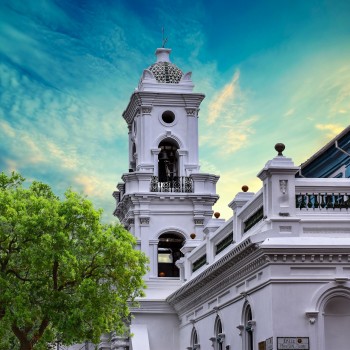
Cuenca
Cuenca is a 16th-century city in Ecuador’s highlands, with the city center listed by UNESCO as a World Heritage Site. A favorite city in Ecuador, you can find many fantastic historical buildings with impressive architecture and many other tourist attractions, such as churches, museums, and attractive city parks.
A favorite place for its cobblestone streets and colonial architecture, Cuenca is also a great place to browse traditional Ecuadorian products, such as ceramics, hats, and different crafts.

